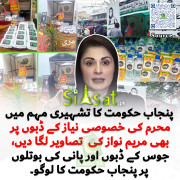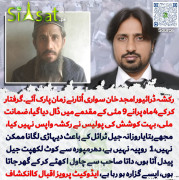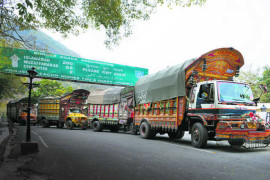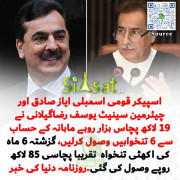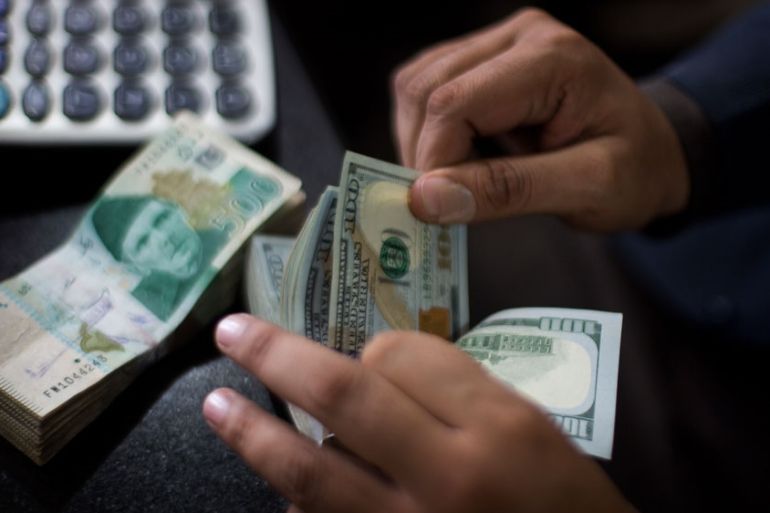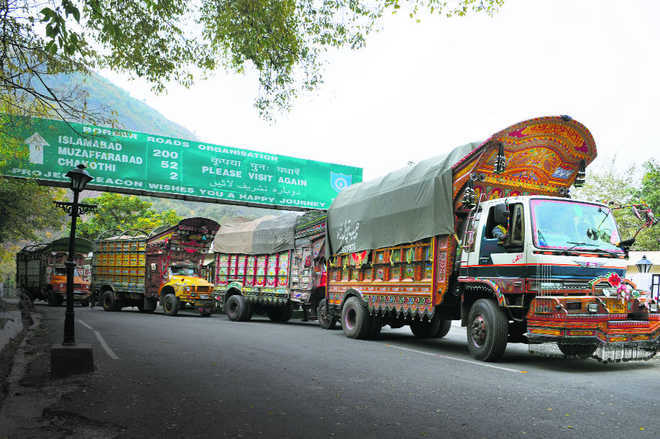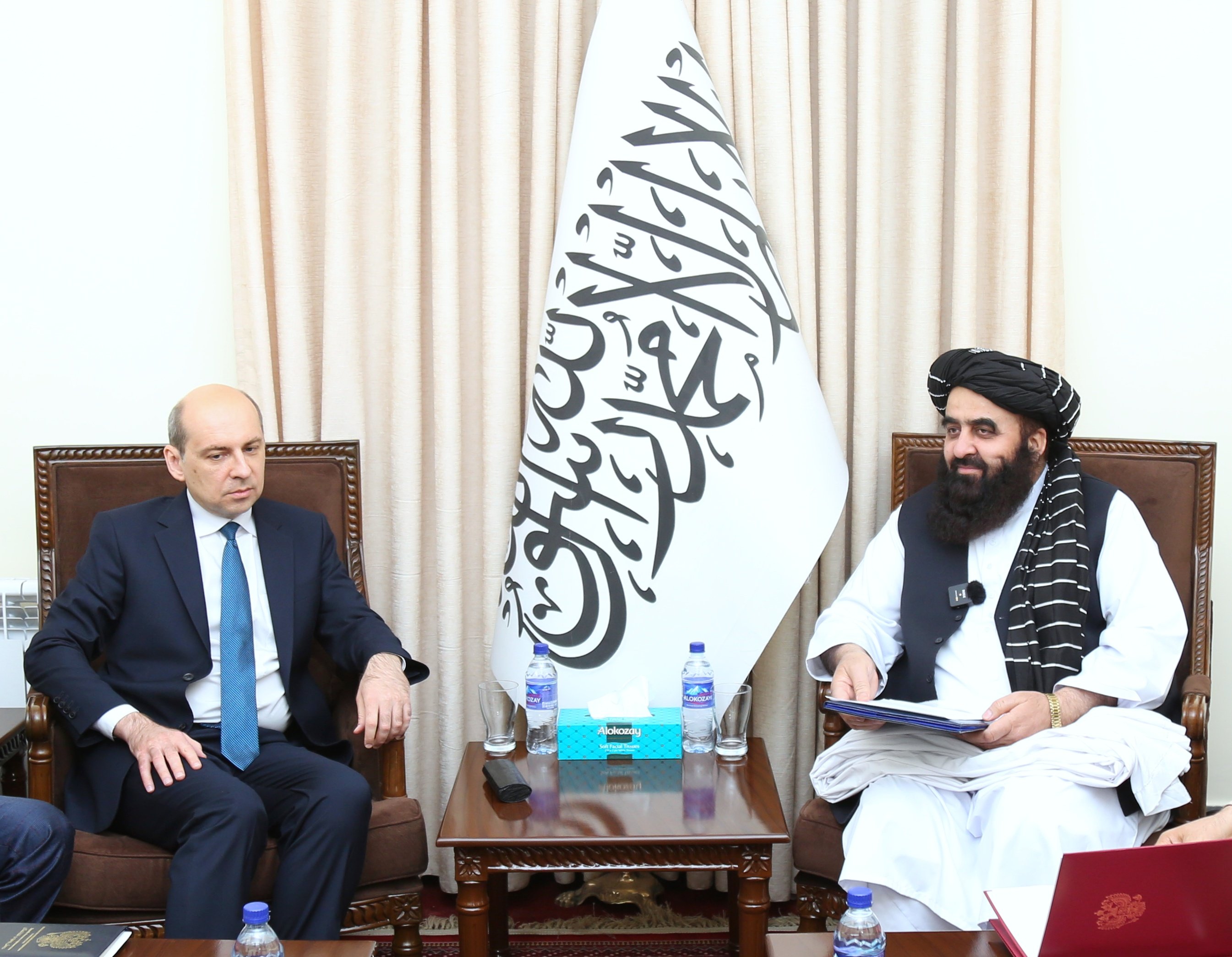Pakistan’s largest city and the nerve centre of its economic activity, Karachi, is home to tens of thousands of people displaced by the devastating monsoon floods that hit the country in July. Like any developing metropolis, Karachi is accustomed to prolonged ethnic and political violence, where various politically-affiliated armed groups struggle to stake their claim on land, resources and votes. In 2009, the city experienced an influx of around 5,000 IDPs after the army’s operation in Swat; their presence was publicly denounced by the city’s majority party. In a similar incident in August, the party called for registration of IDPs, amidst reports of an attack on a group of IDPs attempting to settle in one of Karachi’s public parks.
The suggestion of an extremist “infiltration” of Pakistan in the aftermath of these floods is prominent in local and international media. This narrative suggests that the failure of the state to provide for flood victims will cause, at best, a vacuum for extremist influence in relief camps and at worst, a “takeover” of “large parts of flood-stricken Pakistan.”
An alternative analysis suggests that anti-incumbent sentiment could cause major unrest in the country, compounded by an economic meltdown. This report aims at a timely and comprehensive assessment of both these claims, based on findings from Karachi’s IDP camps.
At the peak of the disaster, in September, over 60,000 IDPs were reported to have moved to various camps in Karachi. According to the Karachi Revenue Department, there are over 47 registered camps in several “towns” or subdivisions across the city. The majority of these are set up in vacant public schools and college buildings, and “adopted” by one or multiple entities, which range from the government itself to individual philanthropists and NGOs. Many government camps have been further “partially adopted” by political party offshoots – student wings, activists and charitable trusts. The number of registered individuals in each camp range from a hundred to over 7,000. These camps provide the basis of primary research for this study. This paper provides an assessment of the following questions:
1 What impact will the management of relief camps by the government have on the anti-incumbent sentiment amongst voters, which was already quite high, in Pakistan? What is the likelihood of extremist elements tapping into this sentiment?
2 How is the presence of IDPs in Karachi in the next few months anticipated to change the political and economic landscape of the city? What pressures – if any – will the presence of IDPs place on the city’s resources and its tenuous ethnic balance?
The “unplanned” parts of Karachi, rife as they are with poor sanitation and inadequate water resources, are considered to be better off than the neglected low-lying areas of Sindh. Unplanned areas tend to start out as squatter settlements and are developed over time by “informal sector entrepreneurs” by illegal sale and division of state-owned land. Through lobbying efforts and purchases from these entrepreneurs, squatters manage to secure tankers of water delivered to the settlement, arrange to siphon electricity from the main grid and over a period of 10 to 15 years acquire basic facilities.
The informal sector in Karachi is not restricted to housing and settlement of migrants. According to urban studies conducted in the 90’s, nearly 75 percent of the jobs in Karachi were provided by the informal sector. Very poor households, in spite of lacking access to land or credit, are able to secure the kind of amenities that were not available to them in the village over a period of time. Because of the inherent attractiveness of the city, nearly 28,000 new informal housing units are added to Karachi each year (based on 1997 estimates). This number is bound to rise over the years, particularly during major shocks to rural livelihoods such as the flood. Aside from being a reflection of relative opportunity within the city, this speaks to the underdevelopment and chronic poverty of the rural areas of Pakistan.
Pakistan has generally suffered “democracy fatigue” during almost every civilian government for a myriad of reasons. Since the election of 2008 that saw the Pakistan People’s Party (PPP) assume power, the country has witnessed an escalation in suicide attacks on civilian targets – collateral damage due to the operation on the Pak-Afghan border and deepening political and economic instability. Therefore, the legitimacy of the government was already at a low point when the floods hit; many cited the lack of trust in the incumbent government for slow local and international aid responses to the prime minister’s appeal for funding. Assessments of IDP camps in Karachi show that not only has the government managed to provide a steady stream of food, shelter and medical assistance, but has also successfully reached out to independent and non-profit entities to assist the flood victims. However, this effort does not seem to translate into increasing or even sustaining support for the PPP. In fact, there is a clear worry about the inability of donors to sustain relief efforts and an overall lack of developmental planning of the incumbent government.
According to an AP report, there is rising resentment against a number of senior politicians who are suspected of having diverted floodwaters to neighbouring villages to save their own land. Labour Minister Khursheed Shah prominently features as a supposed culprit. However, there is no evidence to suggest that making breaches in other parts of the river would cause less destruction, or impact fewer people. According to one development economist, for example, a rudimentary examination of census records shows that a large number of people were always at high risk of displacement by this flood, whether or not politicians acted to save their own lands. Therefore, a large part of the anti-incumbency narrative is not simply a one-way process that originates in the camps and is reflected by the media, but a dynamic process where IDPs were simultaneously making and consuming news reports.
Whether or not political party leaders are cited as being directly responsible for causing the devastation, affectees narrate a clear sense of neglect in the villages. This is often offset by praise for the camp administrators, and particularly, the donors. In places where the administration and upkeep of camps is undertaken by a non-PPP entity the respondents cleanly differentiate between the “heroes” and the “villains” of the disaster.
The ostensible reluctance of the PPP to take credit for its relief efforts provides an interesting division between the political institution and the administrative structure of the state. According to the PPP leader in Sindh, FauziaWahab, party officers are involved in flood relief efforts in an official capacity and there is no need to publicise the party’s effort in camps. At SITE Polytechnic Institute, the PPP member and bureaucrat managing a camp of over 4,000 people said putting up banners and flags seems inappropriate since “the government is ours, and everyone knows it”. This is not to say the camp is immune to political rivalries: leaders from several political parties frequent the SITE camp, possibly because of its location close to the city centre. Senior politicians tend to arrive and distribute relief, and tell residents that they will be given cash compensation and land in Karachi.
Respondents at the camp recall visits from ANP and PPP politicians, and were often confused as to which one was providing support.
It is important to bear in mind that expressed dissatisfaction towards political figures does not translate into a swing in support for the incumbent party. Some experts believe that it is only a matter of time before IDPs in Karachi identify new patrons for protection in the city, and that this may in fact decrease the risk of conflict in the city. In rural areas, the systems of patronage and protection during the next election will have a major role to play in determining polling outcomes; the flood itself is unlikely to have a major impact on destabilising powerful political parties. Barring immediate polls, however, the impact of the flood on anti-incumbency sentiment is likely to gradually be replaced by other developmental factors. Party presence and conflict risk. It is useful to disaggregate political association in the aftermath of the floods by locus of activity: the impact that the floods will have on association in Karachi, and the impact they will have on the rural areas of Sindh. In Karachi, it was evident at the outset that the presence of 60,000 IDPs would not cause a significant shift in votes in a city of over 18 million people. However, what many observers are anticipating are indirect effects of waves of migrants looking for livelihood and shelter in the coming months, and the potential for violent conflict. If there is a direct causal link between the presence of IDPs in Karachi and increased violence, then it is poorly understood. The period of July-October has seen target killings, strikes and violence is various parts of the city; most of it linked to struggles between rival parties MQM and ANP. There have been no reports of IDPs being caught in the crossfire or participating in these conflicts. Party politicians from the ANP and MQM are sceptical of the IDPs being a source of conflict in the city. According to ANP leader Shahi Syed, “there is an abundance of land (in Karachi). The presence of a few thousand people will not make a difference.” The parties’ disinterest in IDPs as a potential recruitment ground may be due to social or cultural reasons as well – both Syed and MQM leader Farooq Sattar agree that while the migrant from KP is “enterprising”, the IDPs from Sindh are poor, unskilled and extremely unlikely to make an entry into the competitive working class or middle class of Karachi.
Given that many of the poorest IDPs are still in camps, there is opportunity for monitoring the well being of families that have seldom been exposed to medical facilities and income support programmes. Policy making in Pakistan has frequently been hampered by a lack of local knowledge. Careful enumeration and follow-up of the progress of households, providing mothers and infants with medical care and knowledge on hygiene is possible at a much lower cost than before, and these opportunities should be availed.
Many non-profits are providing vocational training and employment assistance to enable Karachi’s IDPs in finding livelihood opportunities in coming months. Initiatives such as these could prevent IDPs from having to depend on criminal syndicates for employment. Providing employment guarantees while attempting to cut back on spending is a challenge that the government will face in coming months. Incorporating employment guarantees in the reconstruction process is one way around this. Particularly on smaller infrastructure projects such as village-to-market roads and inter-village roads, it would be worthwhile to explore mechanisms for the employment of local labour instead of focussing entirely on capital-intensive projects.
The Watan Card scheme must be used fairly, with transparent mechanisms for addressing grievances. At a time when the government is under high levels of public scrutiny, attempts to politicise reconstruction and rehabilitation schemes will tilt the precarious balance of trust from the local and international community against the government of Pakistan. Independent monitoring and evaluation mechanisms should be built into the cash transfer scheme. Using data provided by NADRA and NDMA, Watan Card beneficiaries can be mapped and matched with affected families, including those IDPs who have returned home. It is important to design and implement these projects at the earliest to identify leakages (affectees who did not get the card, card-holders who could not access the money) and irregularities and overlaps.
http://www.dailytimes.com.pk/default.asp?page=2010\11\22\story_22-11-2010_pg7_23
The suggestion of an extremist “infiltration” of Pakistan in the aftermath of these floods is prominent in local and international media. This narrative suggests that the failure of the state to provide for flood victims will cause, at best, a vacuum for extremist influence in relief camps and at worst, a “takeover” of “large parts of flood-stricken Pakistan.”
An alternative analysis suggests that anti-incumbent sentiment could cause major unrest in the country, compounded by an economic meltdown. This report aims at a timely and comprehensive assessment of both these claims, based on findings from Karachi’s IDP camps.
At the peak of the disaster, in September, over 60,000 IDPs were reported to have moved to various camps in Karachi. According to the Karachi Revenue Department, there are over 47 registered camps in several “towns” or subdivisions across the city. The majority of these are set up in vacant public schools and college buildings, and “adopted” by one or multiple entities, which range from the government itself to individual philanthropists and NGOs. Many government camps have been further “partially adopted” by political party offshoots – student wings, activists and charitable trusts. The number of registered individuals in each camp range from a hundred to over 7,000. These camps provide the basis of primary research for this study. This paper provides an assessment of the following questions:
1 What impact will the management of relief camps by the government have on the anti-incumbent sentiment amongst voters, which was already quite high, in Pakistan? What is the likelihood of extremist elements tapping into this sentiment?
2 How is the presence of IDPs in Karachi in the next few months anticipated to change the political and economic landscape of the city? What pressures – if any – will the presence of IDPs place on the city’s resources and its tenuous ethnic balance?
The “unplanned” parts of Karachi, rife as they are with poor sanitation and inadequate water resources, are considered to be better off than the neglected low-lying areas of Sindh. Unplanned areas tend to start out as squatter settlements and are developed over time by “informal sector entrepreneurs” by illegal sale and division of state-owned land. Through lobbying efforts and purchases from these entrepreneurs, squatters manage to secure tankers of water delivered to the settlement, arrange to siphon electricity from the main grid and over a period of 10 to 15 years acquire basic facilities.
The informal sector in Karachi is not restricted to housing and settlement of migrants. According to urban studies conducted in the 90’s, nearly 75 percent of the jobs in Karachi were provided by the informal sector. Very poor households, in spite of lacking access to land or credit, are able to secure the kind of amenities that were not available to them in the village over a period of time. Because of the inherent attractiveness of the city, nearly 28,000 new informal housing units are added to Karachi each year (based on 1997 estimates). This number is bound to rise over the years, particularly during major shocks to rural livelihoods such as the flood. Aside from being a reflection of relative opportunity within the city, this speaks to the underdevelopment and chronic poverty of the rural areas of Pakistan.
Pakistan has generally suffered “democracy fatigue” during almost every civilian government for a myriad of reasons. Since the election of 2008 that saw the Pakistan People’s Party (PPP) assume power, the country has witnessed an escalation in suicide attacks on civilian targets – collateral damage due to the operation on the Pak-Afghan border and deepening political and economic instability. Therefore, the legitimacy of the government was already at a low point when the floods hit; many cited the lack of trust in the incumbent government for slow local and international aid responses to the prime minister’s appeal for funding. Assessments of IDP camps in Karachi show that not only has the government managed to provide a steady stream of food, shelter and medical assistance, but has also successfully reached out to independent and non-profit entities to assist the flood victims. However, this effort does not seem to translate into increasing or even sustaining support for the PPP. In fact, there is a clear worry about the inability of donors to sustain relief efforts and an overall lack of developmental planning of the incumbent government.
According to an AP report, there is rising resentment against a number of senior politicians who are suspected of having diverted floodwaters to neighbouring villages to save their own land. Labour Minister Khursheed Shah prominently features as a supposed culprit. However, there is no evidence to suggest that making breaches in other parts of the river would cause less destruction, or impact fewer people. According to one development economist, for example, a rudimentary examination of census records shows that a large number of people were always at high risk of displacement by this flood, whether or not politicians acted to save their own lands. Therefore, a large part of the anti-incumbency narrative is not simply a one-way process that originates in the camps and is reflected by the media, but a dynamic process where IDPs were simultaneously making and consuming news reports.
Whether or not political party leaders are cited as being directly responsible for causing the devastation, affectees narrate a clear sense of neglect in the villages. This is often offset by praise for the camp administrators, and particularly, the donors. In places where the administration and upkeep of camps is undertaken by a non-PPP entity the respondents cleanly differentiate between the “heroes” and the “villains” of the disaster.
The ostensible reluctance of the PPP to take credit for its relief efforts provides an interesting division between the political institution and the administrative structure of the state. According to the PPP leader in Sindh, FauziaWahab, party officers are involved in flood relief efforts in an official capacity and there is no need to publicise the party’s effort in camps. At SITE Polytechnic Institute, the PPP member and bureaucrat managing a camp of over 4,000 people said putting up banners and flags seems inappropriate since “the government is ours, and everyone knows it”. This is not to say the camp is immune to political rivalries: leaders from several political parties frequent the SITE camp, possibly because of its location close to the city centre. Senior politicians tend to arrive and distribute relief, and tell residents that they will be given cash compensation and land in Karachi.
Respondents at the camp recall visits from ANP and PPP politicians, and were often confused as to which one was providing support.
It is important to bear in mind that expressed dissatisfaction towards political figures does not translate into a swing in support for the incumbent party. Some experts believe that it is only a matter of time before IDPs in Karachi identify new patrons for protection in the city, and that this may in fact decrease the risk of conflict in the city. In rural areas, the systems of patronage and protection during the next election will have a major role to play in determining polling outcomes; the flood itself is unlikely to have a major impact on destabilising powerful political parties. Barring immediate polls, however, the impact of the flood on anti-incumbency sentiment is likely to gradually be replaced by other developmental factors. Party presence and conflict risk. It is useful to disaggregate political association in the aftermath of the floods by locus of activity: the impact that the floods will have on association in Karachi, and the impact they will have on the rural areas of Sindh. In Karachi, it was evident at the outset that the presence of 60,000 IDPs would not cause a significant shift in votes in a city of over 18 million people. However, what many observers are anticipating are indirect effects of waves of migrants looking for livelihood and shelter in the coming months, and the potential for violent conflict. If there is a direct causal link between the presence of IDPs in Karachi and increased violence, then it is poorly understood. The period of July-October has seen target killings, strikes and violence is various parts of the city; most of it linked to struggles between rival parties MQM and ANP. There have been no reports of IDPs being caught in the crossfire or participating in these conflicts. Party politicians from the ANP and MQM are sceptical of the IDPs being a source of conflict in the city. According to ANP leader Shahi Syed, “there is an abundance of land (in Karachi). The presence of a few thousand people will not make a difference.” The parties’ disinterest in IDPs as a potential recruitment ground may be due to social or cultural reasons as well – both Syed and MQM leader Farooq Sattar agree that while the migrant from KP is “enterprising”, the IDPs from Sindh are poor, unskilled and extremely unlikely to make an entry into the competitive working class or middle class of Karachi.
Given that many of the poorest IDPs are still in camps, there is opportunity for monitoring the well being of families that have seldom been exposed to medical facilities and income support programmes. Policy making in Pakistan has frequently been hampered by a lack of local knowledge. Careful enumeration and follow-up of the progress of households, providing mothers and infants with medical care and knowledge on hygiene is possible at a much lower cost than before, and these opportunities should be availed.
Many non-profits are providing vocational training and employment assistance to enable Karachi’s IDPs in finding livelihood opportunities in coming months. Initiatives such as these could prevent IDPs from having to depend on criminal syndicates for employment. Providing employment guarantees while attempting to cut back on spending is a challenge that the government will face in coming months. Incorporating employment guarantees in the reconstruction process is one way around this. Particularly on smaller infrastructure projects such as village-to-market roads and inter-village roads, it would be worthwhile to explore mechanisms for the employment of local labour instead of focussing entirely on capital-intensive projects.
The Watan Card scheme must be used fairly, with transparent mechanisms for addressing grievances. At a time when the government is under high levels of public scrutiny, attempts to politicise reconstruction and rehabilitation schemes will tilt the precarious balance of trust from the local and international community against the government of Pakistan. Independent monitoring and evaluation mechanisms should be built into the cash transfer scheme. Using data provided by NADRA and NDMA, Watan Card beneficiaries can be mapped and matched with affected families, including those IDPs who have returned home. It is important to design and implement these projects at the earliest to identify leakages (affectees who did not get the card, card-holders who could not access the money) and irregularities and overlaps.
http://www.dailytimes.com.pk/default.asp?page=2010\11\22\story_22-11-2010_pg7_23
Last edited by a moderator:


